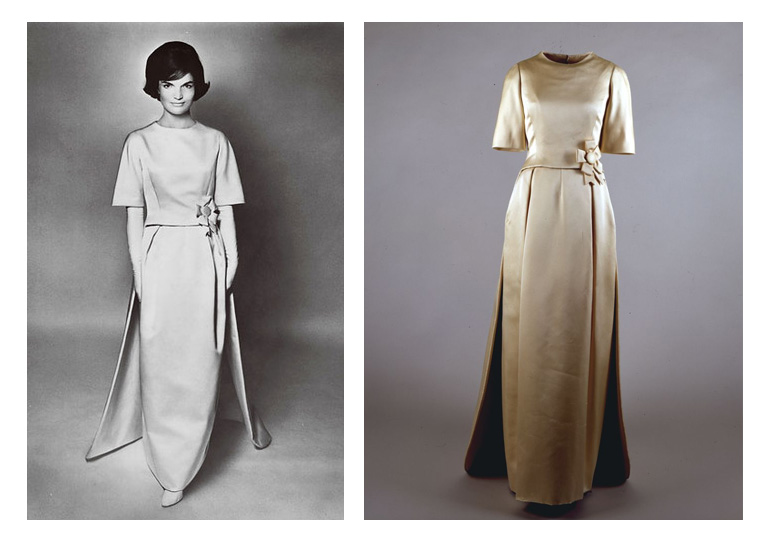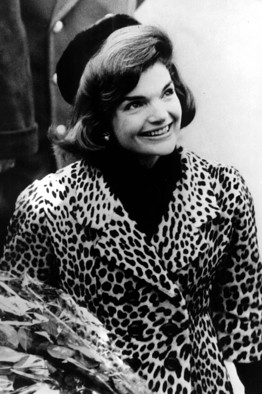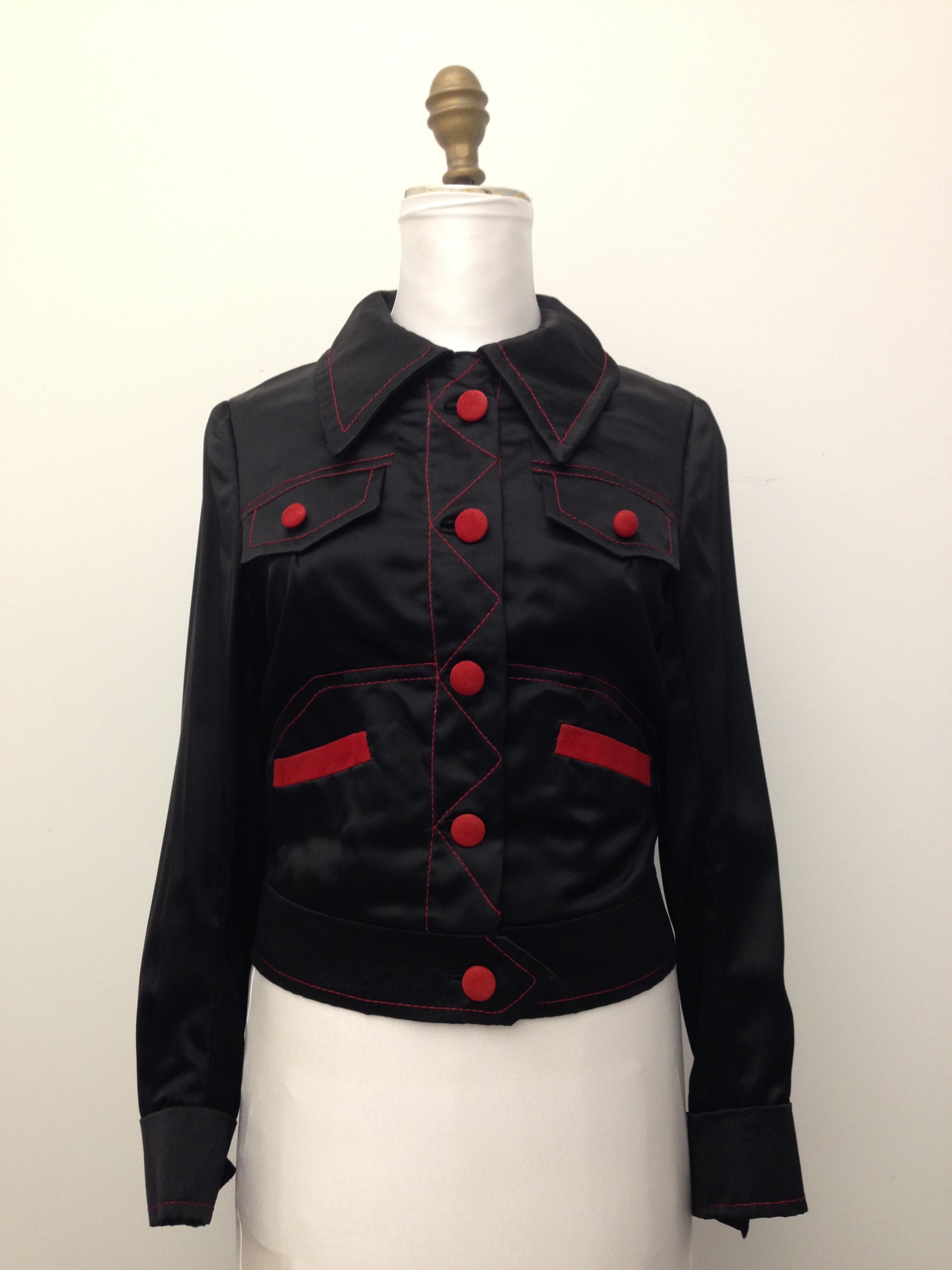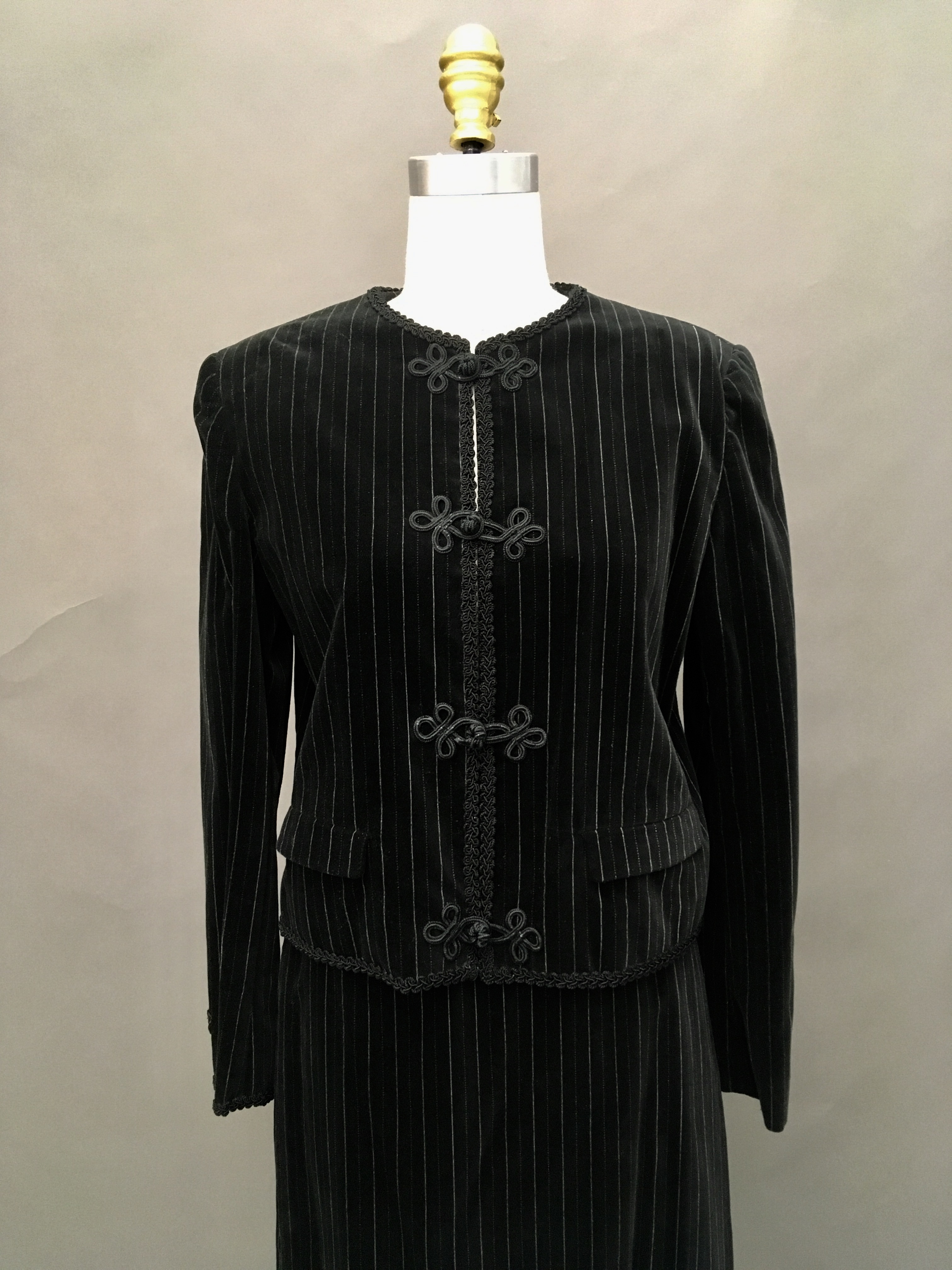Blog post by Jacqueline Fogarty ’18
The Oleg Cassini name has a vast history, associated with everything from inaugural gowns to tennis outfits, perfume to movie costumes. As the years progressed and the designer evolved along with his brand, he dove into new opportunities for expansion in different directions. With a career lasting seventy years, Oleg Cassini left an important mark on the fashion industry as the longest career of any American designer, and much of his work lives on in the Cornell Costume and Textile Collection.
After studying design in Florence, Italy, Cassini left for the United States in 1936. He initially began his career designing film costumes for Paramount Pictures. After the attack on Pearl Harbor, he became a U.S. citizen and joined the military. He served during World War II and continued in the Calvary Division until 1952 when he returned to New York City ready to make his name in the fashion world. He successfully launched his Oleg Cassini brand, designing and defining women’s luxury fashion.
Oleg Cassini became a household name with the Kennedy administration. Jacqueline Kennedy named Cassini the “Secretary of Style,” and he worked as the exclusive designer for the First Lady. During this time, Cassini had creative freedom to combine his love of luxury and costume design with development of the First Lady’s image as a style icon. Over the course of three years, Cassini designed over 300 custom outfits for Jacqueline Kennedy. Cassini aided in defining trends of the decade, from boxy jackets to simple streamlined silhouettes. Fashion moments like the leopard coat and her double satin white inaugural gown are celebrated in history. While Cassini claimed the pillbox hat as his design, the First Lady herself admitted it was a Halston.

First Lady Jacqueline Kennedy in her 1961 inaugural gown, designed by Oleg Cassini (now part of the Smithsonian’s National Museum of American History. Photo: PG.67.102.071, Gown: PL.234793.01 Cape: PL.234793.02)
After President John F. Kennedy’s death, Cassini ventured into ready-to-wear products and licensing. In addition to his women’s collection, he developed menswear collections, sport looks, and perfume. He was the first designer to license his name, which dramatically expanded his brand. Much of his inspiration during this time stemmed from western styles, like the jacket in the photo below, as well as his love for sports. His last business venture was designing a line of wedding dresses with David’s Bridal.
The Cornell Costume and Textile Collection received its first donation from the House of Cassini in 1983 during the peak of his brand. Cassini viewed the CCTC as an important collection that could preserve his legacy in the fashion industry and would educate young designers through his example. Cassini’s designs incorporated playful elements like frog closures and detachable cuffs and collars as well as innovative textile experimentation. His innovative and playful design details are a strong example for students and enhance the Costume Collection’s presence as a teaching collection in the Department of Fiber Science & Apparel Design.
In his ready-to-wear and sport collections Cassini embraced synthetic fabrics like polyester and acrylic, revolutionary at the time, and he designed with velour fabric in sport, day, and evening wear. Along with Cassini’s clothing donations, he included numerous articles, photos, and letters–all of which are found in his donor file and provide relevant and historical context to pieces in the Collection. The news article below discusses Cassini’s use of synthetic materials, which were new and exciting fabric developments in the early 1960s.

A 1964 article by Pola Stout, which chronicles newly available synthetic fibers and features a photograph of Cassini with his models.
The House of Cassini made three donations to the Cornell Costume Collection, totaling 70 garments. Some of Cassini’s donations are one-of-a-kind samples, while others were pieces that went into full-scale production. The donations are a striking example of the breadth and innovation of Oleg Cassini’s work and a cherished asset to not only the Cornell Costume and Textile Collection but also Cornell University community as a whole. Oleg Cassini passed away in 2006, but his seventy-year career led to many legendary contributions to fashion history and Cornell students have the opportunity to learn from his work and explore the world of Cassini.
Jacqueline Fogarty ’18 is a senior studying fashion design and has worked as an undergraduate research assistant in the Cornell Costume & Textile Collection since the fall of her freshman year. Read more about Jacqueline in her profile.







Good idea. Can I use this information?